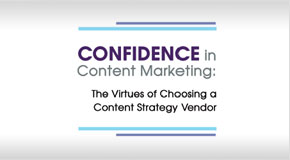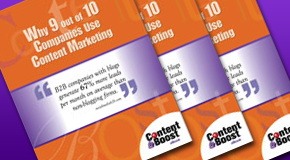The panic is rising, the anxiety is building and the fear is overwhelming for marketing gurus out there—the next generation of the Penguin webspam algorithm has been officially rolled out.
According to Matt Cutts, head of Google’s webspam team, the latest iteration of the search engine’s algorithm is already quickly earning its keep, as evidenced by the 2.3% of English-US queries that have already been affected by this upgrade. The search engine changes have taken affect for all worldwide language searches and the scope of Penguin will vary by language. As Cutts succinctly explains, “languages with more webspam will see more impact.”
While the announcement of Penguin 2.0 comes as no surprise for marketers and IT managers, as Google has been warning companies of the impending changes for weeks., The agonizing thought of losing your page one Google rank is becoming increasingly ubiquitous across every industry.
That’s because marketers have already been down this road before. On April 24 2012, Google rolled out Penguin 1.0, penalizing websites that were overly optimized, guilty of keyword stuffing and inundated with content spam, or black-hat web spam. Simply put, Google was doing more than just slapping the wrists of those websites who were over-SEOing. It was actually blacklisting them from the search results.
According to Google, Penguin 1.0 affected about 3.1% of English searches and 3% of queries in languages such as German, Chinese, and Arabic.
“The change will decrease rankings for sites that we believe are violating Google’s existing quality guidelines,” Cutts explained in a blog at the time. “We’ve always targeted webspam in our rankings, and this algorithm represents another improvement in our efforts to reduce webspam and promote high quality content.”
Penguin 2.0 is no different. Google is still dedicated to finding black-hat webspam and celebrating sites that play by Google’s rules. The latest iteration is even more comprehensive than Penguin 2.0 and will play a bigger role in the complete transformation of digital marketing. Here are just a few things you need to keep in mind:
- Fresh content: Dynamic sites will always rank higher than sites with static content but the catch is that thanks to Penguin 2.0, the content has to be organic and unique. Content farms will continue to get weeded out along with spammers, keyword stuffers and repurposers. So put your creative thinking hat on.
- Links, links, links: Are you concerned about whether your blog’s hyperlinks take your readers to other credible websites? You should be. However, you also need to worry about who is linking back to your website. That is because Penguin 2.0 is going to take an extra hard look at your inbound and outbound links.
- Titles and descriptions: Whether your subpage titles are too short, too long, too repetitive or too keyword dense are all things you need to concern yourself with. Understand the purpose of website titles and descriptions because Google sure does.
- Page speed: How fast (or slow) does your page load? Your customers care and so, too, should you as Google prioritizes speedy webpage loads.
- Over-optimization: Take a good hard look at your homepage. If one word like “cloud computing” is present more than a handful of times, rethink your strategy. Don’t attempt to game Google; it’s a game you will constantly lose.
Last month, Cutts put out a great video entitled “What are the Top 3-5 SEO Areas Where Webmasters Make the Most Mistakes.” Check it out:
Edited by
Gerald Baldino















